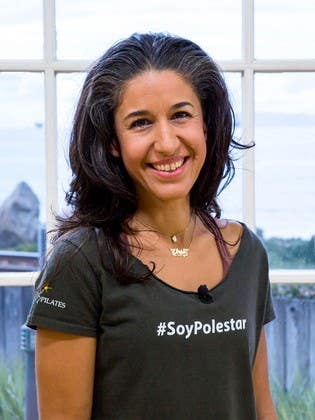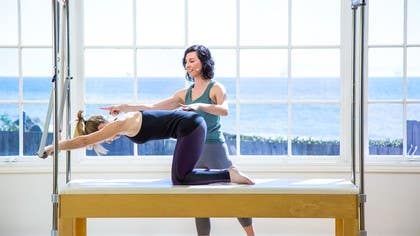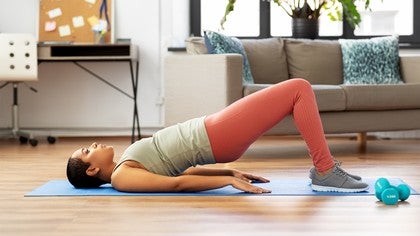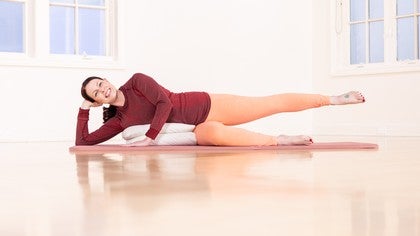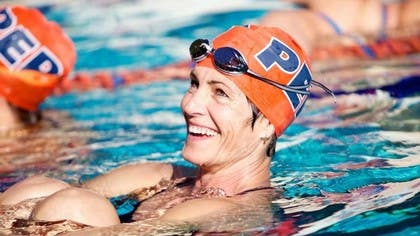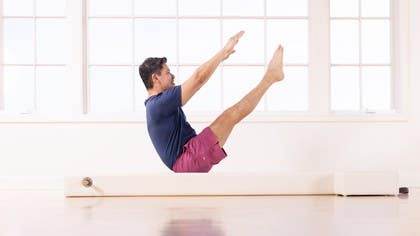
Aligning the Spine: Pilates for Scoliosis Care
Every person is unique. Just as one's fingerprint, voice, and face are unique, so is the curvature of one's spine. While we are all different, there are similarities that create categories when it comes to the curves of the spine. Most curves are considered "normal" and account for the majority of the world’s population.
The "normal" spine has three curves. When viewed from the side, the neck and low back curve inward, while the space between the shoulder blades curves outwardly. The inward curves of the neck, or cervical spine, and the low back, or lumbar spine, are lordotic curves. The outward curve of the upper back, or thoracic spine, is a kyphotic curve.
The degrees of curvature vary, yet ideally, the lordotic curvature of the cervical spine matches that of the lumbar. When an individual has scoliosis, the curvatures of the spine vary. The curvatures of the spine, considered scoliotic, are ones that pull the spine to the side. They may also involve some form of rotation or twist.
According to the American Association of Neurological Surgeons, scoliosis is an abnormal curvature of the spine that affects two to three percent of the population, an estimated six to nine million people in the United States.
Scoliosis is not a rare condition and it is increasing in prevalence. According to the Scoliosis Research Society (SRS), a non-profit organization based in Milwaukee, Wisconsin, there is a threefold increase in the prevalence and treatment of adult spinal deviations, including scoliosis. With the a growing elderly population worldwide, further increases in adult spinal abnormalities are expected over the coming decades.
The scoliotic curvatures of the spine cause muscular adaptations that lead to a wide array of compensatory movement patterns and tissue development, making Pilates an ideal movement practice for this growing population.
In most cases, the cause of scoliosis is unknown or idiopathic and is often detected during an individual’s childhood or early adolescent years. Scoliosis is primarily detected from the ages of 10 to 15, occurring equally among both sexes. Females, however, are eight times more likely to progress to a curve magnitude that requires treatment.
The Three Types of Curves
Scoliosis has been commonly classified into three categories: congenital, neuromuscular, and degenerative. In 2001, Lawrence G. Lenke, M.D., a leading expert in spinal deformity surgery, and a team of researchers in New York City introduced a new category: adolescent idiopathic.
Congenital scoliosis occurs due to embryological malformation of one or more vertebrae and may occur in any location of the spine. Because these abnormalities are present at birth, congenital scoliosis is usually detected at a younger age than idiopathic scoliosis.
Neuromuscular scoliosis includes scoliosis that is caused by neurological or muscular diseases, such as cerebral palsy, spinal cord trauma, muscular dystrophy, spinal muscular atrophy, and spina bifida. Neuromuscular scoliosis usually progresses faster than idiopathic scoliosis and often requires surgical treatment.
Degenerative scoliosis is caused by wear and tear on the facet joints and intervertebral discs, which are the moving parts of the spine. Diagnosed later in life, degenerative scoliosis results in spinal asymmetry described by a side-to-side curvature often found in the lumbar spine.
Idiopathic scoliosis is the diagnosis when all other causes are excluded. It comprises about 80% of all cases, making it the most common type of scoliosis. Adolescent idiopathic scoliosis is usually diagnosed during puberty.
The Four Common Curves of Scoliosis
As described in Madeline Black’s scoliosis tutorial, the four common curves of scoliosis are: the right thoracic, right thoracolumbar, left lumbar, and right thoracic-left lumbar.
The right thoracic curve appears in the upper or mid-back areas. It can be seen because it causes the right shoulder blade to protrude while the left shoulder blade appears to be sunken in.
The right thoracolumbar curve moves to the right in both the lower thoracic and lumbar areas. It is commonly known as a C curve (C anteriorly, and a reverse C posteriorly).
The left lumbar curves to the left side of the lumbar spine.
The right thoracic-left lumbar curve is in the thoracic region, with an equal counter curve to the left in the lumbar region. This is commonly known as an S curve. (It looks like an S when viewed from the front.)
The progressive deformities of the spine and trunk caused by scoliosis can result in loss of height, stooped posture, and potential spinal pathologies like spondylolisthesis.
How Pilates Can Help
With their keen eye for alignment and balanced movement, Pilates instructors are able to detect when a body is imbalanced. Although it is important for Pilates instructors to stay within their scope of practice and not diagnose a client if they are not qualified medical professionals, he or she possesses the skill set to decrease the degenerative nature that scoliotic curves have on the spine, organs, and body in general.
In the Pilates studio, we have so many tools to adapt movements, such as using props when needed in order to provide a balanced movement experience. Keeping an open mind when working with individuals with scoliosis is also key. Sometimes, individuals may need to add rotation to exercises that involve spine articulation in order to find the smoothest path of movement for the spine.
The use of directed breath is also a very powerful tool to mobilize and "fill" the areas of the spine that are potentially collapsing due to changes in the spine. Exercises that emphasize spine mobility, coupled with cueing that guides the breath to create space between the spinal segments, are ideal. The most important thing is to make sure that your clients and students feel comfortable and find more ease as they move.
Exercises to Try
Here are some Pilates Mat exercises that can offer space between the segments of the spine and tone in the supporting tissues.
Bridge: Lie on your back with your knees bent and the feet flat on the floor. Starting with the tailbone, lift each segment of the spine off the floor. Hold at the top for a moment and then lower back to the floor, segment by segment. Imagine pausing around each segment of the spine as it moves and taking breath. Notice how it feels. Is there more space? Is there a greater challenge for the back of the thighs?
Opening the Book: Lie on your side with the knees bent and hands interlaced behind the head, elbows bent. Keeping the legs stacked, lift the top elbow and arm, rotating the trunk toward the ceiling and allowing the top arm to open like the cover of a book. Return to the original position. Repeat on the other side. Only move as far as it feels good. Feel the movement of the ribs through the breath.
Mermaid: Begin in a seated position with the legs bent to one side. Reach the arm that is farthest from your bent legs up along the ear. Bend at the waist, reaching the top arm towards the place where the wall and ceiling meet. Bend the elbow of the top arm, bringing your fingers to your ear or neck. Return to an upright seated position and lift the other arm, this time bending to the opposite side. Allow the hips to move and explore the movement of the trunk around the supporting arm. Pause as you move through the exercises, breathing into the spine, shoulders, and chest.
Have you discovered that Pilates is an ideal exercise for people with scoliosis? Let us know your thoughts in the comments below!
Comments
You need to be a subscriber to post a comment.
Please Log In or Create an Account to start your free trial.
